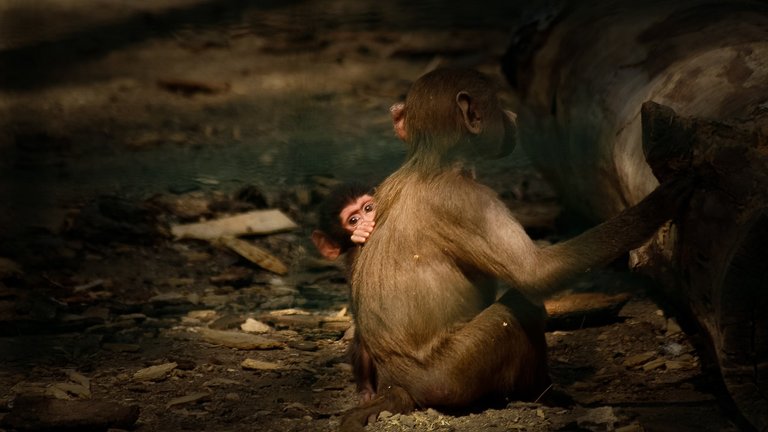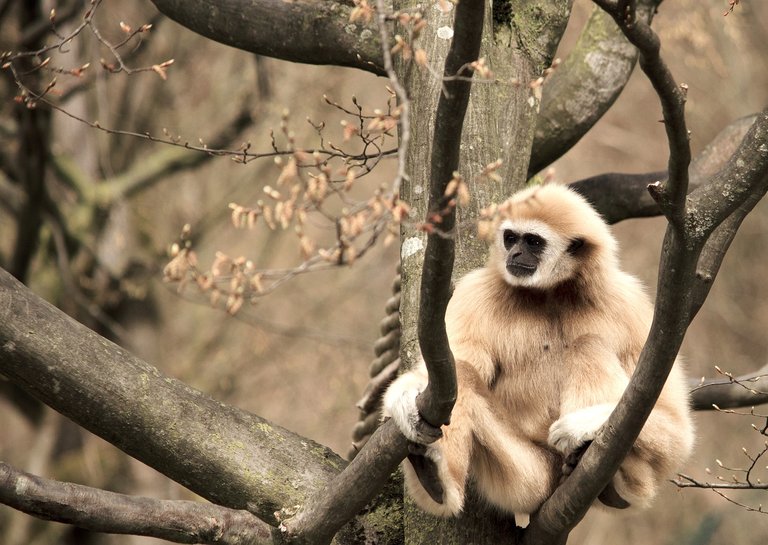
Picture Credit: TheDigitalArtist (Source: Pixabay)
The fossil, an entire lower molar, features an area with a once-obscure family and species (Kapi ramnagarensis) and speaks to the principal new fossil pongid species found at the acclaimed fossil website of Ramnagar, India, in virtually a century. Gilbert's find was fortunate. Gilbert and colleagues Chris Campisano, Biren Patel, Rajeev Patnaik, and Premjit Singh were rising slightly slope in an exceedingly very territory wherever a fossil primate jaw had been discovered the previous year. Whereas delaying for a brief rest, Gilbert has seen one thing shiny in an exceedingly very little heap of the earth on the underside, so he uncovered it and immediately acknowledged he'd discovered something uncommon.

Picture Credit: Dave-LZ (Source: Pixabay)
The fossil record of lesser primates is largely nonexistent. There are alternative primate species known throughout that time, and no gibbon fossils have recently been found anywhere shut Ramnagar. Therefore we've got an inclination to complete we'd need to be compelled to urge our work done to create a sense of exactly what this small fossil was." Since the fossil's disclosure in 2015, long periods of study, examination, and correlation were crystal rectifier to look at that the tooth features an area with another animal varieties, when to precisely decide its place within the Pan troglodytes kin record. The molar was shot and CT-filtered and relative samples of living and exhausted primate teeth were analyzed to feature vital similitudes and contrasts in dental life structures. "What they discovered was very convincing and clearly highlighted the nearby affinities of the 13-million-year-old tooth with gibbons," said Alejandra Ortiz, who is incredibly important for the exploration cluster.

Picture Credit: strichpunkt (Source: Pixabay)
Regardless of whether, for the current, they've got a bent to easily have one tooth, and presently, we should always use caution, this may be a rare revelation. It pushes back the foremost seasoned known fossil record of gibbons by in any event 5,000,000 years, giving a really necessary scrutinize the beginning phases of their transformative history." Notwithstanding establishing that the new apes to the soonest known fossil gibbon, the age of the fossil, around thirteen million years ancient, is contemporaneous with notable unimaginable primate fossils, giving proof that the movement of extraordinary gorillas, along with orangutan progenitors and lesser apes from Africa to Asia occurred around the same time and thru similar spots.

Picture Credit: skeeze (Source: Pixabay)
Realizing that gibbon and orangutan predecessors existed in an exceedingly very similar spot along in Northern Asian nation thirteen million years back, and can have a comparable relocation history across Asia, is actually cool. The exploration group intends to proceed with research at Ramnagar, having as lately got a reward from the National Science Foundation to proceed with their continuous track great ape fossils.

Picture Credit: adilaksono (Source: Pixabay)
This exploration at Ramnagar was sponsored by the Leakey Foundation, the PSC-CUNY personnel grant program, Hunter College, the AAPA skillful advancement program, the University of Southern California, the Institute of Human Origins (Arizona State University), and also the National Science Foundation. Indian associates are additionally upheld by the Indian Ministry of Earth Sciences and Science and Engineering Research Board.
Reference:
1. Materials provided by Arizona State University.
Journal Reference:
1. Christopher C. Gilbert, Alejandra Ortiz, Kelsey D. Pugh, Christopher J. Campisano, Biren A. Patel, Ningthoujam Premjit Singh, John G. Fleagle, Rajeev Patnaik. New Middle Miocene Ape (Primates: Hylobatidae) from Ramnagar, India fills major gaps in the hominoid fossil record. Proceedings of the Royal Society B: Biological Sciences, 2020; 287 (1934): 20201655 DOI: 10.1098/rspb.2020.1655
Consider creating your own blog under dblog.org so you could write and publish articles under your own domain :)
Thanks for the help again @engrave . Really grateful to you for this information again. Posted my article for the first time through dblog.org!! :)
Congratulations @crazy-science! You have completed the following achievement on the Hive blockchain and have been rewarded with new badge(s) :
You can view your badges on your board and compare yourself to others in the Ranking
If you no longer want to receive notifications, reply to this comment with the word
STOPDo not miss the last post from @hivebuzz: